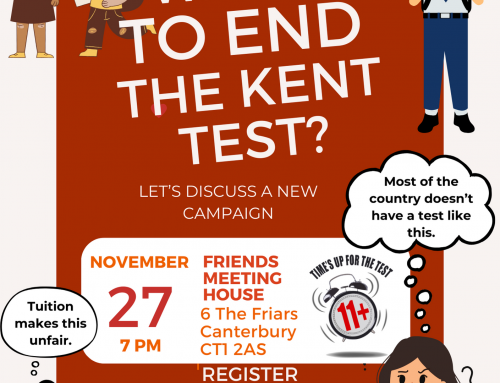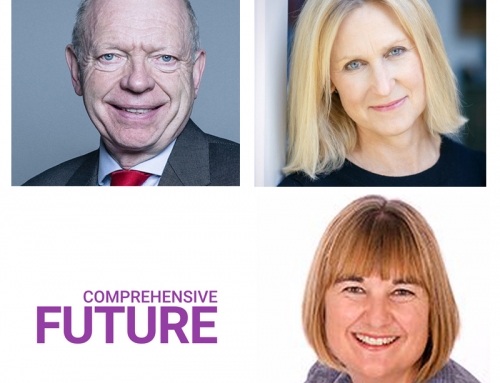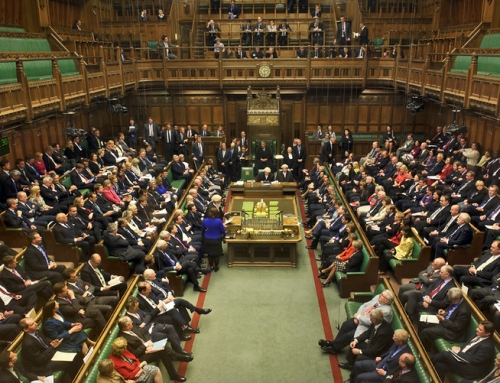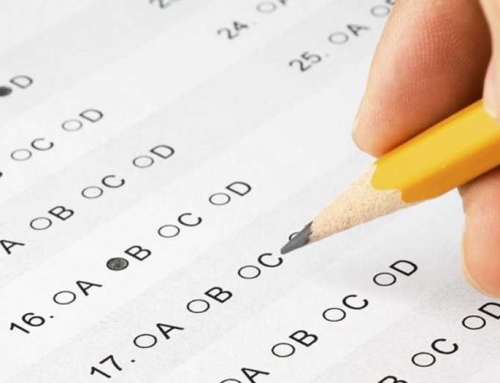Report from the Comprehensive Future seminar at the Compass Conference – London 23rd October 2004
Parental Choice and Social Cohesion
Speakers – Fiona Millar and Professor Sally Tomlinson
Fiona Millar
The debate about whether we should continue to put choice and diversity at the heart of our education policy in a third term is an urgent one as we try to square the circle of meeting the needs of the most aspirant parents and the most disadvantaged children .
In my view the two are not mutually exclusive. While there are some parents who will only seek the best for their child without much consideration for the rest, there are many of us, possibly more than the government realises, who aren’t keen to grab our vouchers and flee to the private sector.
We want our children educated in good local schools with a cross section of their community and see an enlightened self interest in the value that bestows on them and others. We also want to the government to overcome the real causes of underachievement in too many children who don’t have the advantages ours may have. It is that endemic class based underachievement that is the real challenge facing our education system. We see the side effects of that all around us in the large numbers of young people leaving school with no qualifications, crime and anti-social behaviour and the unacceptably high level of teenage pregnancies.
The root causes of this underachievement are complex. They frequently lie outside school in deprivation, low expectations and a poverty of aspiration from parents whose own experiences of school have been negative. Many teachers particularly in inner city schools are making heroic efforts to tackle it. And it’s crucial that the next stage of our school reforms support rather than undermine this.
There is no doubt that many of the government’s reforms in education have been good.
As a parent and governor in a primary school which was failing its pupils in the mid 90s but is now thriving and successful, I have seen at first hand the benefits of investment, more rigorous teaching, the literacy and numeracy hours and the changing culture when it comes to moving on failing heads.
But I have also seen the effects of choice and the market from the sharp end. What it means when the aspirant but anxious parents bale out. How quickly a schools reputation becomes demonised in the local community with inevitable knock on effects for the self esteem of the children in it. How hard it is to re-build a reputation with a changing intake when league table position is so important. And while I would defend the need for schools to be accountable and parents to have the right to information, simply continuing with the Tory idea that choice and the competition will deliver the universal high standards and social cohesion that have eluded this country for so long, is not enough. Our children’s education is too important to be left to a competition with winners and losers.
We need to come up with a radical plan for the third term which builds on the good work on standards and teaching but puts equity and fairness at the heart of our policies.
Many of the proposals in the five year plan are good – early years, extended schools, modernising and broadening the curriculum and offering financial support to young people to stay on in education. The concept behind the Tomlinson reforms is crucial to the idea of more personalised learning. We need to wider the secondary curriculum to give vocational qualifications the status they have for our continental neighbours while stretching the brightest students and ensuring basic key skills.
Above all we need the government not to be deflected from implementing the best of Tomlinson as soon as it is hit by a bit of predictable gunfire from our enemies on the right and in the media who would secretly prefer to return to a system of selective schools where only an elite did well. They have already started to paint this as a dumbed down “all must have prizes ” system. But there is nothing wrong with every child having the prize of fulfilling his or her potential and we should be proud of modernising our comprehensive schools in this way.
There is a place for choice within this, as long as we are realistic about its limitations as a driver for change and to what extent we can meet every parent’s choice. At the moment rather than being wooed by the notion of choice, many parents are cynical and confused.
They know that we aren’t’ really offering a real choice between different types of school.
With a highly prescriptive curriculum driven by tests and exams, the difference between what schools are offering, even if they specialise, is marginal.
Parents know they are being asked to choose between good, less good and bad schools according to a narrow definition lay down by successive governments and expressed through league tables which often reflect the schools intake rather than the quality of its teaching, its ethos and the value it adds to its pupils.
For all of us to get into the very good schools they would have to expand maybe two three of four times in size. This is both financially and physically impossible and probably undesirable. Everyone can’t get into the most popular schools. Absolute choice is an illusion. Parents know it. And the politicians should be honest about it in the way the DfES website is. Under its advice to parents section it states clearly: “You should not risk wasting your first choice by choosing a school where you stand little chance of getting a place.”
Instead we should use the language of preference and have the courage to reform secondary school admissions in a way which would enable more parents to exercise that preference (which will usually be for a good local school near to where they live) in a fair and transparent way.
The current system a mess. It militates against choice and social cohesion by allowing too many schools to select their pupils, rather than the other way round, and encouraging schools to compete with each other for the best students. The number of schools which control their own admissions has doubled since the Tories introduced the market in education and in spite of the governments stated antipathy for selection, the number of selective schools places has increased since 1997. In fact there is more diversity in admissions than in almost any other aspect of our school system and maybe not surprisingly parental satisfaction is lowest in the areas where this diverse market is most active
By and large parents who live in small communities with just one local school are satisfied, according to the government’s own research. But in urban areas such as London almost a third of parents fail to get into their first choice of school as a bewildering array of different selection procedures kick in.
In some areas many of our schools have ceased to be comprehensive at all as the knowing, affluent or newly converted church goers take the escape routes we offer into seemingly better schools, which routinely lock out the children they don’t want to teach.
Maybe not surprising then that some parents panic and flee to the private sector as their own local schools fail to balance intakes and start to sink under the weight of the social problems their pupils import from home.
Bizarrely instead of addressing what most parents know is the worst side of the market, the government now wants to fragment it further by encouraging every school to become a foundation school, entitled to control which children they admit. This is the complete opposite of parental choice. More and more schools will do the choosing, usually to the detriment of the most needy, who will then end up in the socially polarised demonised schools that no-one else wants.
And if you doubt my analysis listen to what the Chief Adjudicator of Schools himself says; “Left to their own devices most schools will drift to the posh”. They will do this by a wide range of methods which are completely acceptable under the Code of Admissions. The 11 plus, the tests of faith, banding children against the ability of those applying (having first chosen that group by judicious distribution of the school brochure), social selection using reports and attendance records from primary school heads, vicars’ letters and even giving places to the children of staff.
This isn’t just unfair to the most challgenging children ; it is confusing to parents who above all want some certainly about the outcome when they are making a choice of school. Just to give one example. Here are the admissions criteria of one high performing, technically comprehensive London girls Church school – much sought after as it tops the league tables.
“There are 50 Foundation Places reserved for applicants of families who regularly attend the Church of England and 40 Open Places for those of another faith or who have no faith.
“Applicants for both types of places are first assessed by a test administered by the School to see into which of three ability bands (above average, average and below average) they fall and they are then put into six groups – three bands for Foundation and three for Open Places”. Confused? – it gets worse
“Four criteria are then applied to Foundation applicants and three criteria to Open applicants. Applicants who are not awarded a Foundation Place on the four criteria are then considered for an Open Place using the same three criteria. “
The criteria – well faith and distance come into it but crucially all applications have to be supported by a reference from their primary school head teacher to prove that the successful ones will actively support the aims, ethos and standards of this Church of England School. ”
Reforming a system which includes such blatantly unfair and subjective criteria should be a source of pride in the third term and at the heart of the manifesto. Introducing a national fair admissions system with no academic selection at 11 would increase choice, help to put schools at the heart of their local communities and enhance social cohesion. It would also help smooth the transition between primary and secondary and back up the proposals in the Children Bill on the most at risk.
Crucially it would enhance progress on standards for our most challenging pupils by giving them an entitlement to schools which are currently the preserve of the most socially and academically desirable.
Changing the system in the way that is currently proposed –by giving a bit of opportunity for all but special arrangements and better schools for some is not keeping with our party’s core values of opportunities for the many not the few, nor does it maximise choice.
If we want to end this country’s chronic educational polarisation along class lines and overcome the effect that has on the quality of all our lives, lets keep up the investment, modernise and personalise the curriculum, continue the focus on strong leadership and teaching.
But let’s underpin that by finally making our schools truly comprehensive.
Professor Sally Tomlinson
“ Every parent will choose from a range of modernised specialist schools or academies”
Government five year plan for education. September 2004.
We are all in favour of motherhood, apple pie and choice, but should be clear that under the rubric of choice and competition between a diversity of schools we are re-introducing complex systems of selection and inequitable resourcing of schools, and widening social and racial/ethnic divisions which does not help create a socially cohesive democratic society.
I would love to document for you the remarkable success of comprehensive education from the 1960s, both as a project to raise educational standards and opportunities for all, and as an egalitarian project, but will limit myself to reminding you of the “choices” on offer and point out the limitations on even “expressing a preference”.I will conclude with evidence of the negative socialand economic results of choice.
Secondary education choices.
Private or part private
Private independent schooling- (some 1500 private schools) is a good/bad choice if you have the money. 7% and rising of parents have the money, and it pays off as 26% of those taking A levels are from private schools, and acceptances at Oxford in 2002 were 47% from maintained schools and 53% from independent and “other” types of school. Money does help you get a top university place, despite recent moans.
Adonis and Pollard in the 1990s research concluded that “ a superclass of top professionals an managers are now almost entirely a privately schooled elite”
City technology Colleges, 15 exist, they were planned to be funded by industry but eventually there was more state support than industrial. A conservative model intended to get industry to pay for more of the undoubted need for good technical education, and embraced by this government
Academies or City Academies
9 were actually opened by Sept 2003 and a further 4 by 2004, 31 in development, 200 promised in the five-year plan. A second academy the Reg Vardy Foundation wanted to sponsor in Doncaster was defeated by Yorkshire common sense. The Vardy Kings Academy in Middlesborough, as you may know, has been accused of teaching creationism and they don’t want that in Doncaster.. A group of parents put the school up for auction on ebay (for £2 million)
The DfES is still insisting the academies will turn standards around in disadvantaged areas and they may well do depending on the admissions procedures.( and they will be oversubscribed and select), but will the standards be raised for just a few selected disadvantaged as in the grammar schools model.? The Academy model is drawn from the CTCs, and from USA magnet and Charter schools which have business input and some are for-profit schools. My favourites- the Florida “Global Renaissance Academy of Distinguished Education.” and the “Global Academy for International Athletics”. Most of them have ended up selecting. And several charter schools have gone bankrupt.
Maintained schools
Bt 2003 a hierarchy of maintained schools was well established and choice was a battleground in some areas, notably London.. The strategies some parents use are worthy of a novel. Reading estate agents quantified buying near a desirable secondary school at 23K but its easier to rent then move, move in with grandparents etc.
Selection of pupils by schools has continued to increase, there is selection by 11+ examination, selection by schools own testing, selection by permitted 10% “aptitude” in all other schools, taken up by some specialist schools,(despite the controversy over what constitutes aptitude and how is it different from ability- the lawyers of 1998 Act know), selection by faith, selection by interview until next year anyway, selection by reports from primary schools and various other means by schools which are their own admissions authorities (This could be for all secondary schools soon apparently as proposed in the Five Year Strategy)
164 grammar schools, affecting the intake of over 500 “comprehensive” schools and funding a vast private tutoring industry. 36 LEAs affected although the Government plays this down. 15% wholly, 21 partially, expansion from 1998 allowed the equivalent to 8 more grammar schools. Hey and Bradford, studying Beacon schools (extra money for excellence) conclude some of these are reinventing themselves as grammars. The schools remain middle class enclaves, 2% on FSM compared to 18% locally. In Birmingham 37% of pupils in comps are on FSM compared to 4% in selective schools. The schools are 68% white and draw from mainly white wards but Indians (middle class) represented (14%,with 1% Bangladeshi)
Then we have the modernising diversity to replace the “traditional comprehensive” promised by the PM to encourage meritocratic equality of opportunity and social mobility.
From 1998 schools could designate themselves are Foundation, Voluntary aided or controlled, or Community schools, ( special schools could be foundation or community) and from 1999 there were more Learning support units and programmes for the gifted and talented, Sixth form and tertiary Colleges and 400 FE Colleges offering comprehensive education and training to three million should be noted. Colleges could from 1998 take students from 14 on vocational courses and some 90,000 are on these, how many enthusiastically seen off by their school!
Faith schools have been enthusiastically promoted by the PM and the 2001 White paper noted “ we have increased the range of faith schools, including the first Muslim, Sikh and Greek Orthodox schools. There are contradictions between inclusive education policies and separating pupils by faith
Specialist schools (following the CTC model) have been developed from 1992.
Now around 1000 specialising in arts, business and enterprise, technology, languages, engineering, maths and computing 12, science, sports (mainly inner cities) and latterly humanities and music. No evidence of demand for specialist schools from parents but better resourced schools with nicer uniforms are attractive. Research commissioned by the Specialist Schools Trust (Jesson) found schools achieving more GCSEs but this is highly contested – comparable schools with similar resources do as well, Harvey Goldstein has been critical of the methodology. ( Cyril Taylor knighted by Thatcher for services to specialist schools and then got a special knighthood from Blair!)
Evidence is that parents would like a high quality local school offering a good all-round education (as once promised!) There is no demand for specialisms at 11 and geography makes nonsense of them. But we are about to get more of them with resourcing continuing to be unequal even if all schools eventually develop a specialism The Five- year plan—every schools which is up to standards to be specialist by 2008 and of course an expansion of popular schools and a corresponding decline and fall of unpopular ones!
I have to add further initiatives – Leading Edge schools, Training schools, Extended schools and latterly “wrap around schools offering educare”!
Evidence so far on all this diversity and choice is that
1 school choice policies ( which create a quasi-market in schooling- everyone has to be educated so no perfect market) increase segregation in schools by social class and ethnicity- 1994 finding in 24 OECD countries, Ball et al from 1995, Noden et al 1998, Gillborn and Youdell 2000, Gorard 2002
2. Selection of pupils lowers standards overall (PISA international study. Kent) parents should know this.
3 Economic and cultural capital helps to achieve preferences- SUVs to drive to school in, parental time and knowledge, books, computers, home tutoring.. birth, wealth, purchase – nepotism, bribery, patronage may still count!
4 Poverty and living in deprived enclaves is a major source of polarisation in schooling
5 White parents continue to move their children away from schools with large numbers of minority students, but emerging black and Asian middle classes adopt similar strategies to the white middle classes with expressed preferences for private or selective schools
Conclusion.
Good intentions and politics don’t mix, our policies are creating dangerous polarisations and insecurities. We may be on our way to creating the class Michael Young warned about in The Rise of The Meritocracy of a class who congratulate themselves that their privileges and superior status are deserved because of merit. Choice and market in education legitimates structures of inequality and are dysfunctional for the economy.




